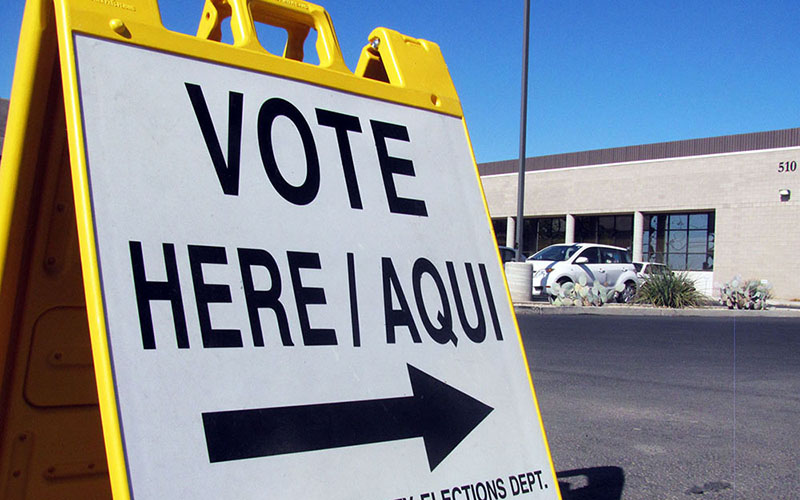
The Census Bureau reported this week that voter turnout was up across the board in 2018, but a new study of Latino voters in Arizona, Nevada, Texas and Florida said their turnout was up sharply and contributed to Democratic advances in those states. (Photo by Natasha Khan/Cronkite News)
WASHINGTON – A new report says Latinos are on track to be the largest minority voting group in 2020, when an estimated 32 million will be eligible to vote.
The Latino Vote Project, a collaboration of several advocacy groups, said Thursday that the influence of those voters was already felt in 2018, with “no question” that a surge of Latino votes tipped Senate races in Arizona and Nevada to Democrats.
But they warned that the momentum they saw in 2018 could end, unless advocacy organizations mobilize and keep communities engaged in politics.
Alex Gomez, co-director of LUCHA – Living United for Change in Arizona – called the 2018 turnout “eight years in the making,” noting that it was 2010 when SB 1070 took effect. The Arizona law required police to check the citizenship status of anyone they stopped.
“When SB 1070 happened, our communities came together and decided, with the little investment we had, to start doing voter registration,” Gomez said. “Those children that were experiencing their parents being detained and deported are actually 18 years old or older now and are ready to vote.”
And they are experiencing the same level of anger they felt in past elections, according to the Latino Vote Project, which cited a study that 82% of Latino Arizonans believed President Donald Trump was using toxic rhetoric.
Voter anger in 2018 was not limited to Hispanics. The Census Bureau reported Tuesday that turnout was up among all age groups and all racial and ethnic groups in the November elections. Overall turnout was up 11%, while turnout for Asians and Hispanics was up 13 percentage points, the Census data show.
The Latino Vote Project looked at the last three elections in four states: Arizona, Nevada, Texas and Florida. In all four states, it said, Latinos made up a larger share of the state’s electorate than they did in 2014 and they voted for Democrats “at significantly higher rates” than they did previously. The report found that 75% of Latinos in Arizona voted Democratic last year, a much higher rate than in 2014.
In Arizona, the report said, those factors contributed to Democrat Kyrsten Sinema’s 2.3% margin of victory over Republican Martha McSally in the race for U.S. Senate. Analysts noted similar trends in Nevada, where Democrat Jacky Rosen unseated Republican Sen. Dean Heller by a five-point margin.
“There’s no question that the growth in the Democratic vote change for Latinos (is) responsible for that,” said Matt Barreto, cofounder of Latino political research group Latino Decisions. “So these are all substantial increases.”
Gomez said advocacy groups like LUCHA organized massive voter registration and voter participation campaigns that stretched beyond the metropolitan areas to reach Latinos in rural communities. She said many were driven by Trump’s comments about Latinos and immigrants, which played a big role in the 2018 Latino turnout.
“This was eight years of community-organizing work,” Gomez said. “We were able to go beyond Maricopa County or Pima County. It allowed us to turn out Latinos that are not in the urban corridors.”
The report also found that while immigration continued to be an important issue for many Latino voters, it was not the main issue in 2018, when voters tended to be more concerned about criminal justice and family leave and sick leave policies.
Emmy Ruiz, a political operative at the campaign consulting firm Newco Strategies, said the report finalized what experts thought for years: That if organizations could utilize the growing Latino population in the United States and bring them to the ballot box, “the impact will be felt.”
“This report reinforces that assumption and shows that in 2018, we saw just that,” she said.
But while they look forward to a larger share of eligible voters in 2020, advocates like Gomez warned that organizations need to mobilize and keep communities engaged in politics to make sure Latinos secure a large portion of the votes in future elections.
“We don’t need people to vote for one cycle,” she said. “We need people to be consistent and persistent voters so we don’t have administrations like this one.”